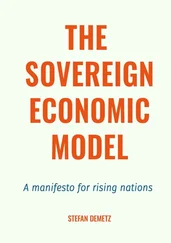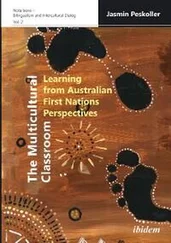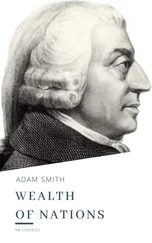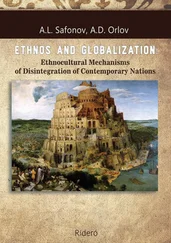Absolutism is not the only form of extractive political institutions and was not the only factor preventing industrialization. Inclusive political and economic institutions necessitate some degree of political centralization so that the state can enforce law and order, uphold property rights, and encourage economic activity when necessary by investing in public services. Yet even today, many nations, such as Afghanistan, Haiti, Nepal, and Somalia, have states that are unable to maintain the most rudimentary order, and economic incentives are all but destroyed. The case of Somalia illustrates how the process of industrialization also passed by such societies. Political centralization is resisted for the same reason that absolutist regimes resist change: the often well-placed fear that change will reallocate political power from those that dominate today to new individuals and groups. Thus, as absolutism blocks moves toward pluralism and economic change, so do the traditional elites and clans dominating the scene in societies without state centralization. As a consequence, societies that still lacked such centralization in the eighteenth and nineteenth centuries were particularly disadvantaged in the age of industry.
While the variety of extractive institutions ranging from absolutism to states with little centralization failed to take advantage of the spread of industry, the critical juncture of the Industrial Revolution had very different effects in other parts of the world. As we will see in chapter 10, societies that had already taken steps toward inclusive political and economic institutions, such as the United States and Australia, and those where absolutism was more seriously challenged, such as France and Japan, took advantage of these new economic opportunities and started a process of rapid economic growth. As such, the usual pattern of interaction between a critical juncture and existing institutional differences leading to further institutional and economic divergence played out again in the nineteenth century, and this time with an even bigger bang and more fundamental effects on the prosperity and poverty of nations.
North of the fence: Nogales, Arizona Jim West/imagebroker.net/Photolibrary
South of the fence: Nogales, Sonora Jim West/age fotostock/Photolibrary
Consequences of a level playing field: Thomas Edison’s 1880 patent for the lightbulb Records of the Patent and Trademark Office; Record Group 241; National Archives
Economic losers from creative destruction: machine-breaking Luddites in early-nineteenth-century Britain Mary Evans Picture Library/Tom Morgan
Consequences of a complete lack of political centralization in Somalia REUTERS/Mohamed Guled/Landov
Successive beneficiaries of extractive institutions in Congo:
King of Kongo © CORBIS King Leopold II The Granger Collection, NY
Joseph-Désiré Mobutu © Richard Melloul/Sygma/CORBIS
Laurent Kabila © Reuters/CORBIS
The Glorious Revolution: William III of Orange is read the Bill of Rights before being offered the crown of England by parliament After Edgar Melville Ward/The Bridgeman Art Library/Getty Images
The bubonic plague of the fourteenth century creates a critical juncture ( The Triumph of Death painting of the Black Death by Brueghel the Elder) The Granger Collection, NY
Beneficiary of institutional innovation: the King of Kuba Eliot Elisofon/Time & Life Pictures/Getty
The emergence of hierarchy and inequality before farming: the grave goods of the Natufian elite http://en.wikipedia.org/wiki/File:Natufian-Burial-ElWad.jpg
Extractive growth: Soviet Gulag labor builds the White Sea canal SOVFOTO
Britain falls far behind: the ruins of the Roman empire at Vindolanda Courtesy of the Vindolanda Trust and Adam Stanford
Innovation, essence of inclusive economic growth: James Watt’s steam engine The Granger Collection, NY
Organizational change, a consequence of inclusive institutions: the factory of Richard Arkwright at Cromford The Granger Collection, NY
Fruits of unsustainable extractive growth: Zheng He’s ship alongside Columbus’s Santa Maria Gregory A. Harlin/National Geographic Stock
Bird’s-eye view of the dual economy in South Africa: poverty in Transkei, prosperity in Natal Roger de la Harpe/Africa Imagery
Consequences of the Industrial Revolution: the storming of the Bastille Bridgeman-Giraudon/Art Resource, NY
Challenges to inclusive institutions: the Standard Oil Company Library of Congress Prints and Photographs Division Washington, D.C.
Noncreative destruction: abandoned Hasting railway station on the way to Bo in Sierra Leone © Matt Stephenson: www.itsayshere.org
Extractive institutions today: children working in an Uzbek cotton field Environmental Justice Foundation, www.ejfoundation.org
Breaking a mold: three Tswana chiefs on their way to London Photograph by Willoughby, courtesy of Botswana National Archives & Records Services
Breaking another mold: Rosa Parks challenges extractive institutions in the U.S. south The Granger Collection, NY
Extractive institutions devour their children: the Chinese Cultural Revolution vs. “degenerate intellectuals” Weng Rulan, 1967, IISH Collection, International Institute of Social History (Amsterdam)
9.
REVERSING DEVELOPMENT
SPICE AND GENOCIDE
THE MOLUCCAN ARCHIPELAGO in modern Indonesia is made up of three groups of islands. In the early seventeenth century, the northern Moluccas housed the independent kingdoms of Tidore, Ternate, and Bacan. The middle Moluccas were home to the island kingdom of Ambon. In the south were the Banda Islands, a small archipelago that was not yet politically unified. Though they seem remote to us today, the Moluccas were then central to world trade as the only producers of the valuable spices cloves, mace, and nutmeg. Of these, nutmeg and mace grew only in the Banda Islands. Inhabitants of these islands produced and exported these rare spices in exchange for food and manufactured goods coming from the island of Java, from the entrepôt of Melaka on the Malaysian Peninsula, and from India, China, and Arabia.
The first contact the inhabitants had with Europeans was in the sixteenth century, with Portuguese mariners who came to buy spices. Before then spices had to be shipped through the Middle East, via trade routes controlled by the Ottoman Empire. Europeans searched for a passage around Africa or across the Atlantic to gain direct access to the Spice Islands and the spice trade. The Cape of Good Hope was rounded by the Portuguese mariner Bartolomeu Dias in 1488, and India was reached via the same route by Vasco da Gama in 1498. For the first time the Europeans now had their own independent route to the Spice Islands.
The Portuguese immediately set about the task of trying to control the trade in spices. They captured Melaka in 1511. Strategically situated on the western side of the Malaysian Peninsula, merchants from all over Southeast Asia came there to sell their spices to other merchants, Indian, Chinese, and Arabs, who then shipped them to the West. As the Portuguese traveler Tomé Pires put it in 1515: “The trade and commerce between the different nations for a thousand leagues on every hand must come to Melaka … Whoever is lord of Melaka has his hands at the throat of Venice.”
With Melaka in their hands, the Portuguese systematically tried to gain a monopoly of the valuable spice trade. They failed.
The opponents they faced were not negligible. Between the fourteenth and sixteenth centuries, there was a great deal of economic development in Southeast Asia based on trade in spices. City-states such as Aceh, Banten, Melaka, Makassar, Pegu, and Brunei expanded rapidly, producing and exporting spices along with other products such as hardwoods.
Читать дальше












